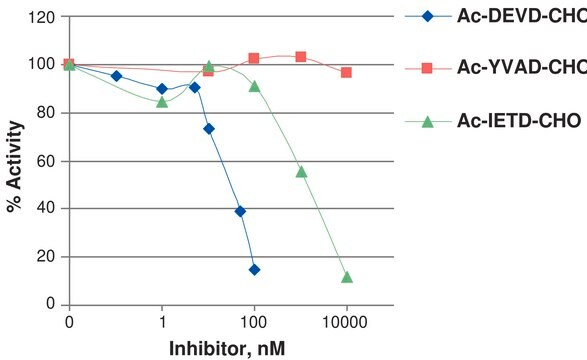SCR527M
Alzheimer′s In A Dish™ PSEN1-RFP Lentivirus
Sinônimo(s):
PSEN1-RFP, ReNcell 3D Alzheimers Model, ADID 3D Neural Cell Model
About This Item
Produtos recomendados
reatividade de espécies
human
Nível de qualidade
técnica(s)
cell culture | mammalian: suitable
cell culture | stem cell: suitable
cell differentiation: suitable
Descrição geral
Recently a 3D model using genetically engineered human neural stem cells that overexpress FAD mutations was reported to recapitulate the two pathological hallmarks of AD: b-amyloid plaques and neurofibrillary tangles. Lentiviruses expressing FAD mutations in human APP with both the K670N/M671L (Swedish) and V717I (London) mutations (APPSL) and/or PSEN1 with the E9 mutation (PSEN1(E9)) and APPSL/PSEN1(E9) along with fluorescent proteins as reporters for viral infection (see below), were used to transfect ReNcell VM human neural stem cells. FACS was utilized to enrich for cells with the highest transgene expressions followed by encapsulation of the sorted cells in a 3D Matrigel culture system. After approximately 6 weeks of differentiation, aggregation of AB was observed. Robust accumulation of phosphorylated tau along neurofibrillary tangles was readily detectable after 10-14 weeks.
The Alzheimer’s In A Dish<TMSYMBOL></TMSYMBOL> PSEN1-RFP Lentivirus is a necessary reagent to set up the Alzheimer’s 3D culture system. The lentivirus contains the PSEN1 FAD mutations and can be used to infect human neural cells. The RFP tag enables assessment of viral infectivity and allows FACS sorting of the highest expressing cells.
Aplicação
Stem Cell Research
Neuroscience
Componentes
Note: For exact viral titer, refer to the label on the vial.
Qualidade
Armazenamento e estabilidade
Lentivirus is stable for at least 6 months when stored at -80°C. After first thaw, place immediately on ice and store in working aliquots to avoid further freeze thaws. Avoid freeze thaws as this will result in a decrease in the virus titer.
Important Safety Note:
• Replication-defective lentiviral vectors are not known to cause any diseases in humans or animals. However, lentiviruses can integrate into the host cell genome and thus pose some risk of insertional mutagenesis.
• Wear gloves when using this product. Avoid skin contact or ingestion of all reagents and chemicals used in this protocol.
• Lentivirus is a risk group 2 and should be handled under approved Biosafety Level 2 (BSL2) controls.
Informações legais
Código de classe de armazenamento
12 - Non Combustible Liquids
Certificados de análise (COA)
Busque Certificados de análise (COA) digitando o Número do Lote do produto. Os números de lote e remessa podem ser encontrados no rótulo de um produto após a palavra “Lot” ou “Batch”.
Já possui este produto?
Encontre a documentação dos produtos que você adquiriu recentemente na biblioteca de documentos.
Protocolos
A stem cell culture protocol to generate 3D NSC models of Alzheimer’s disease using ReNcell human neural stem cell lines.
Nossa equipe de cientistas tem experiência em todas as áreas de pesquisa, incluindo Life Sciences, ciência de materiais, síntese química, cromatografia, química analítica e muitas outras.
Entre em contato com a assistência técnica